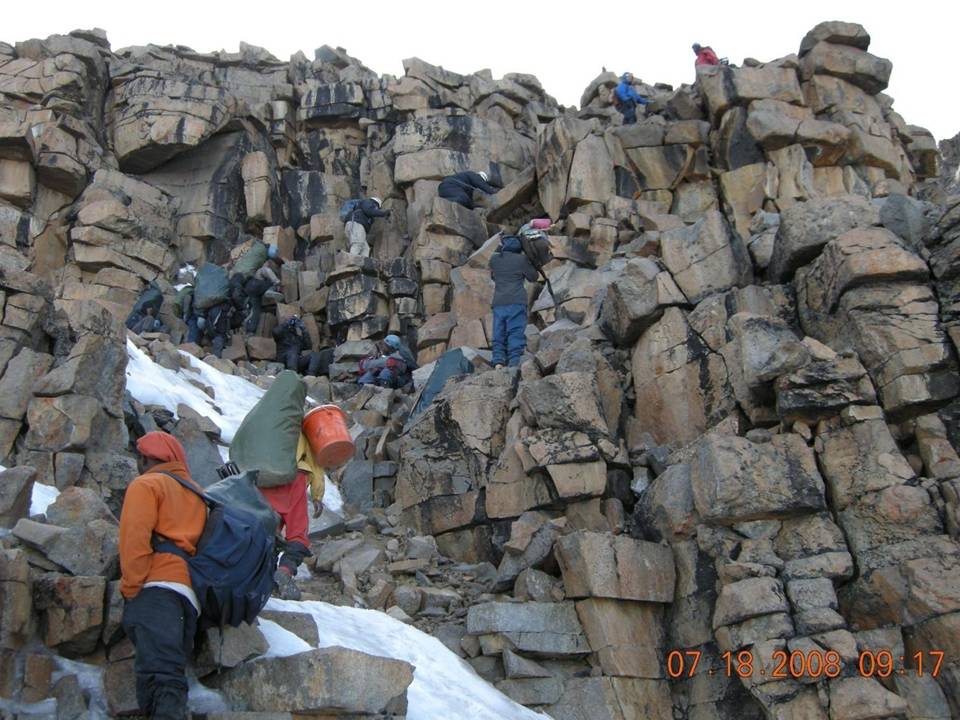How was the Western Breach formed?
The Western Breach was formed many years ago, hundreds of thousands of years back through volcanic activity and discharge from the Kibo Crater, due to volcanic eruptions and the flowing of hot lava from the mouth of the crater.
This route is termed as very risky and accident-prone, in fact, it is a dangerous route that has in the recent past, proved to be fatal by claiming the lives of three mountain climbers. This accident that happened recently in 2006 was a result of a rockfall that claimed the lives of three mountain climbers.
The route had been closed for about a year and then re-opened but because of the route’s history and high risk, most tour operators do not offer mountain climbing tours via this route to the summit of Mount Kilimanjaro.
To approach the Western Breach Route, you can use many of the Kilimanjaro Routes, namely:- the Lemosho route and Shira on the Western side, while the Machame and Umbwe Routes are located on the Southern Side can be used too. Of all these routes that are used to approach and join up with the western breach route, the Umbwe Route is the most popular and challenging approach.
See also how Mount Kilimanjaro was formed
How to climb the Western Breach Route on Kilimanjaro
It is recommended to climb the Western Breach route on Kilimanjaro during the wee hours of the morning, very early at around 6:00 am because when it is still really cold, the ice holds the rocks together and when the sun shines on the rocks, the ice melts and the loose rocks can be hazardous.
You also need to make sure that you have safety equipment like ropes, crampons, and safety hats to hike the Western Breach Route.
If you want to watch something that may inspire you and teach you a thing or two about scaling Kilimanjaro via the Western Breach Route, then Amazon is a great way to start with two movies, to begin with. Kilimanjaro – The Way It Is; Volume 1: The Western Breach is a great movie, you can also check out Imax / Kilimanjaro: To Roof of Africa on Amazon.
How long does it take to climb Kilimanjaro via the Western Breach Route?
Climbing Mount Kilimanjaro using the Western Breach Route usually takes 11 days. However, there is the shorter and steeper Umbwe Route that faces the Western Breach which takes only 6 days leaving climbers without time to acclimatize. This is one of the main reasons why climbers need to have immense experience with trekking at high altitudes.
NB: Fort safety reasons, Tranquil Kilimanjaro does not recommend this route for clients and staff alike as it is very risky.
Is the Western Breach dangerous?
Yes, the Western Breach is rated a dangerous hike, having claimed some lives in the past. There are many reasons why, even in the past, the park authorities and the Tanzanian government have declared it forbidden to the public. Approaching the Western breach, it is like a wall of mosaic bricks, loose rocks that might fall just any minute.
Western Breach Map
The Western Breach map shows a steep ascent from Lava Tower to the crater rim, accessible from Lemosho, Machame, or Umbwe. The map depicts a technically demanding path past Arrow’s Glacier to Crater Camp, offering direct crater access. It’s risky due to rockfall, suitable for experienced climbers, with moderate to high success rates for those prepared, typically part of longer itineraries.
What makes the Western breach unique?
The Western Breach as a standalone route involves a steep and direct ascent through a gap in the crater wall, offering a more adventurous and less crowded path. Its uniqueness lies in providing direct access to the crater, allowing exploration of features like the Reusch Crater and Furtwangler Glacier. However, it is considered risky due to potential rockfall, making it suitable only for experienced climbers.



